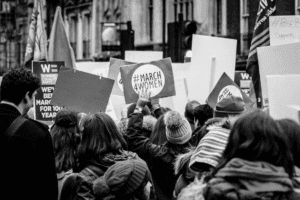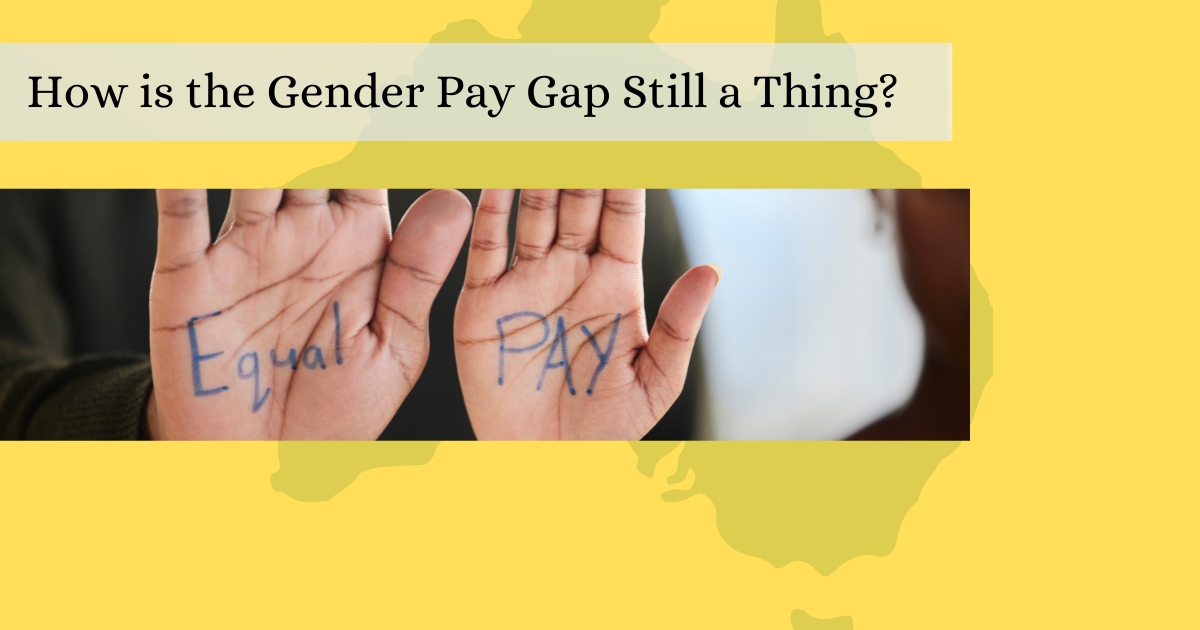Welcome to Australia, the land of the fair go, the promised land where everybody including convicts was encouraged to start a new life. Nobody said in this new life that inequality was going to be an issue that moved from their homeland of origin to the new world. Inequality amongst the genders has persisted consistently throughout time. 150 years ago, women in Australia had very little rights not being allowed to vote, no political voice and few protections against dangers/harm to themselves with Indigenous women having no rights at all. Whilst Australia has come a long way from this time with women’s rights increasing along with introduced freedoms including joining the workforce, here in 2023 there is still a gender pay gap in Australia.
Women’s Rights – An Early Picture
To provide a clear picture of where women started in Australia to here in 2023, we need to travel back in time to 19th-century Australia. Women had very few rights and were essentially considered to be property; first of their fathers and once married those rights were transferred to their husbands, who then became the sole legal guardian of any children resulting from the marriage. By 1827, 39 years after the first settlers arrived in Australia, women were in the workforce due to the necessity of the new land. The Parramatta riot occurred over factory conditions and deprivation of food. By 1884 women had created the First Australian Suffrage Society which was founded by Annie Lowe and Henrietta Dugdale who worked together and separately for women’s rights. In 1895 women were granted equal voting rights in South Australia by Queen Victoria but it would be another 5 years in 1900 before women would be granted the right to vote in Western Australia, and a further 4 years before women were allowed to vote in Tasmania in 1904 and Victoria coming in even later at 1909.
1900 – Onwards

On 09/07/1900 Queen Victoria enacted the Commonwealth of Australia Constitution which allowed the 6 Australian colonies, at the time subject to British law, to start forming their own national governments, which would allow more freedoms for each to think for themselves. 1902 led to federal suffrage which got the Commonwealth Franchise Act granted allowing women the right to vote and stand election for the Australian Parliament. This led to the first Australian women to stand for parliament in 1903, but it wouldn’t be until 1921 that the first woman was elected to parliament, Edith Cowan, who served in Western Australia’s Legislative Assembly until 1924.
It wouldn’t be until 1943 however that a woman was elected to federal parliament, Dame Enid Lyons who served until 1951. Another 23 years would pass before a noticeable movement occurred again with South Australia introducing the SA Council of Aboriginal Women and in 1969 Australian women workers after years of campaigning were allegedly granted equal pay rights. Notable events continued to occur after this including 1975 seeing the first International Women’s Day, 1983 seeing Australia sign the United Nations Convention on the Elimination of All Forms of Discrimination Against Women.
The Workplace
Seeing that in 1969 Australian women were granted equal pay rights in parliament this should be the end, all Australian women receiving the appropriate remuneration for the work that they do. This however was not and to this day in 2023 is still not the case. Workplace gender equality in Australia is still sadly lacking with the Workplace Gender Equality Agency listing the current total remuneration pay gap sitting at 22.8%. That means that for every $1 the average Australian male earns, the average Australian woman is only earning 77c. This adds up to a total average remuneration difference of $25,596 yearly. Just looking at the base salary of full-time workers this still leaves a gap of 13.3%. While some industries have made great strides to eliminate this pay gap, the Australian Bureau of Statistics shows through surveys and research that whilst the pay gap has lowered, progress on closing the gap appears to have slowed in recent years.
Biggest Affected Industries
The common argument you hear from people who claim the pay gap doesn’t exist is that it depends on the industry someone works. As a child, I distinctly remember regularly being told things like; there are just certain things that women are physically incapable of doing, that’s a “boys” job and that isn’t something a girl should do as it isn’t proper. This was in the 1990s and those words still resonate with me today in 2023 as trying to put a woman in her place. Ironically enough the industries that I was pushed towards as a child are some of the industries to exhibit the largest pay gaps including teaching, caring and hospitality. Whereas my male cousin was always encouraged towards more “manly” pursuits which included construction (29% pay gap) and finance (28.8% pay gap).
Pay Equity – A History
To fully understand the pay gap, we must once again travel back in time. Starting in 1912, women were granted a minimum wage set at 54% of a man’s wages with a progressive move not made until 1950 when this was increased to 75% of a man’s wages. 1969 heralded equal pay, but industries consistently found ways around this such as calling the roles different things for men and women but having the same duties and responsibilities but allowing for different pay rates to continue. It was not until 1986 that the Affirmative Action (Equal Employment Opportunity for Women) Act was created and designed to eliminate discrimination against women from their employers.
It would be another 13 years before further work to equalise would come into play with the 1999 Equal Opportunity for Women in the Workplace Act (EEOWA) introduced. This act was designed to provide equal opportunity for women in the workplace, this act whilst working towards equality did not take many things into as serious consideration as it needed to such as parenting and caring responsibilities. Another 10 years will pass before 2009 sees Australia’s first Paid Parental Leave Scheme. Moving to 2013 the Australian Council of Trade Unions ACTU launched the “Time to Care” campaign aiming to improve family – work-life balance and the Australian Government started providing funding to the childcare sector.
2017 sees the Turnbull Government creating a roadmap for a strategy called Towards 2025: An Australian Government Strategy to Boost Women’s Workforce Participation. This notion included the premise of reducing the gender participation gap by 25% by 2025. 2018 saw the Gender Pay Gap at its lowest point in 20 years, with the full-time base salary gap reduced to 14.6%. After stalling over the course of the pandemic, in February 2023 the base pay gap is at a new low of 13.3%
In 2018 a group of over 500,000 women in the workplace came together and created the Australian Gender Equality Council, a not-for-profit organisation aiming to respond to the slow-paced move to gender pay equality. Whilst these women are hard at work we must remember that unfortunately whilst Australian women have come a long way in the move to remove the pay gap, it is still prevalent in today’s society and everybody plays a part in eliminating this once and for all.


